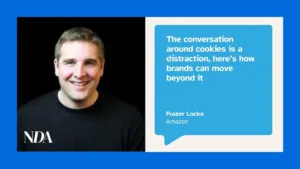By John Campbell Head of Innovation at Independent Agency Network, TIPi Group.
Essentially, Chat GPT is a labour-saving device. These are an ever-present feature in the evolution of society over the last 100 years, powering everything from the industrial revolution to the more recent digital revolution. It will not replace humans anytime soon, but it will save us time on a plethora of tasks that allows us to focus on more interesting endeavours.
The ad tech industry is still awash with manual repetitive tasks begging to be automated or reduced. AI can help here, making digital advertising not only quicker, but also less complex. The set-up and optimisation can not only be time intensive, but also difficult to navigate. There’s no reason AI can’t generate the ultimate configuration of ad tech, navigating potential technical issues to set-up a best-in-class campaign with the relevant tracking.
So, how do we find the perfect balance of people and tech?
Following the launch of ChatGPT4, 500 times more powerful than its predecessor, digital marketers should recall the history of chess. In 1997, Garry Kasparov lost to Deep Blue, and machines began dominating chess. However, ‘centaur’ teams—humans and machines combined—proved to be superior.
Now is the time for digital marketers to embrace the centaur approach, integrating tech into workflows to drive marketing efficiencies. Three prime examples include:
- Content Strategy
Machine learning extracts meaning from pages by identifying entities, helping us view content through a search engine lens. Combining this with an understanding of customer needs, we can create content roadmaps supported by data, empowering teams to publish content that resonates with people.
- Technical SEO
Machines detect site changes, while humans validate findings and draft fixes. Recrawling sites ensures successful implementation, showcasing the effectiveness of centaur teams in resolving issues swiftly.
- Data Science
Machine learning sorts, labels, and segments big data for human use. Centaur teams are essential for accuracy and scalability, particularly when data is critical to success.
In chess, machines outpace humans with their precision and continuous learning. However, centaurs excel against machines, harnessing accuracy, creativity, and adaptability. Every agency in the TIPi Group is passionate about weaving tech and human ingenuity together, creating a dynamic synergy for a future brimming with possibilities.
How do we ensure we don’t allow people to feel ‘replaced’ and remain productive?
With the cacophony of excitement around the abundance of these technical advances, you’d be forgiven for thinking that maybe humans are destined to be little more than batteries to power The Matrix.
Yet, we also know that those who find their work fulfilling and rewarding (and therefore, happier) also do their best work, benefiting both themselves and their employer.
‘Productivity’ is the output of things, based on input within a given time frame. By that definition, inventors and visionaries were probably the most unproductive people alive, many spent an entire life producing a single thing. And this is where the beauty of ‘The Human’ comes in, in our ability to be creative and solve novel problems. Thinking, creative problem-solving and generating new ideas are all forms of production too but cannot be nailed down to efficient productivity. It’s our edge over the machines.
Stackoverflow’s banning of ChatGPT is an example of why we shouldn’t discount our productivity value, the novelty of the problems posed means ChatGPT couldn’t answer them in a meaningful way. Answers that appeared decent in structure and content were in fact, useless, as they couldn’t account for the unique, and often complex, context.
The need for human creativity and quality control.
The crux of using solutions like ChatGPT is knowing and exploiting its strengths and avoiding its weaknesses.
Models (like the large language model behind ChatGPT) predict the accuracy of the next word(s) in a sentence based on a training set of data (textual data from across the internet). The result is the ‘most average’ of responses, as that would produce the highest accuracy score. Input conditions or parameters can help with this somewhat, but that just adjusts the ‘colour of the picture’.
The results can still be incredibly powerful from the view of providing access to a conglomeration of information from across the web in a single response, thinking about perspectives on a piece of art, or interpretations of battle tactics, when search engines would only provide lists of distinct results. Especially valuable for subject matter you may be exploring for the first time.
Structured, well-known information, with clear parameters, are well suited to solutions like ChatGPT and while creativity can be fuelled by its’ outputs, the outputs are not creative in themselves (in the same way that Midjourney or Dall-E images are syntheses, as opposed to novel creativities).
How far are these technical advances going to take us?
Clearly, we are living in the infancy of a major technological change. Truth be told, nobody 100% knows what the latest and long-term impact will be.
The very strange, and I mean the very strange fact is that the majority of technology breakthrough we are seeing is based on science fiction in books, movies and TV. Alexa is famously based on the idea of Jeff Bezos to have a Star Trek-style computer you could talk to in your living room.
Other technologies are based on robots and computer assistants, such as J.A.R.V.I.S in Iron Man or human avatars, such as Holly in Red Dwarf. From a practical point of view for any of these fiction-based ideas to come true, language plays a huge part.
In the past 10 years, speech-to-text and text-to-speech is at a level similar to those seen in the futuristic predictions. What has been lacking is the brains behind the operation to remember the context in conversation and generate text in a human style to facilitate a back-and-forth conversation. While Voice technology, like Alexa, Siri and Co. have been a breakthrough, they all rely on an intent-based model with human written responses.
With many technological breakthroughs, there might have been a long-term end-use case, an example would be android-like robots. However, that is still far away, but for now, we are seeing a huge number of secondary use cases, which might not have been envisaged from the outset using this technology that will eventually power those much longer-term visions.
Embrace the possibilities today.
To conclude, we know the digital marketing industry is talking about this seriously – or at least excitedly. From worked examples, future potential use cases, adoption curves all the way to full discourse around the future shape of the digital workforce: ChatGPT is the hot topic of 2023.
The reason being, it feels for the first time that the power of AI is finally accessible to the masses and the masses are ready to see what it can do.
So how should all the parties within the digital ad land ecosystem be managing these conversations? The simple answer is testing and measuring. The opportunities are massive for smarter, faster use of these technologies, as are the potential pitfalls (do we really want to trust AI-generated SEO Content, do we risk optimising our work into ever-shrinking circles?).
Test cheap, learn quickly and you won’t go far wrong. The barriers to entry have been blown out of the water. So, embrace the possibilities, and see where you can take them. Just don’t expect it to replace the huge value, and need, of the judgement and creativity of the human mind.









